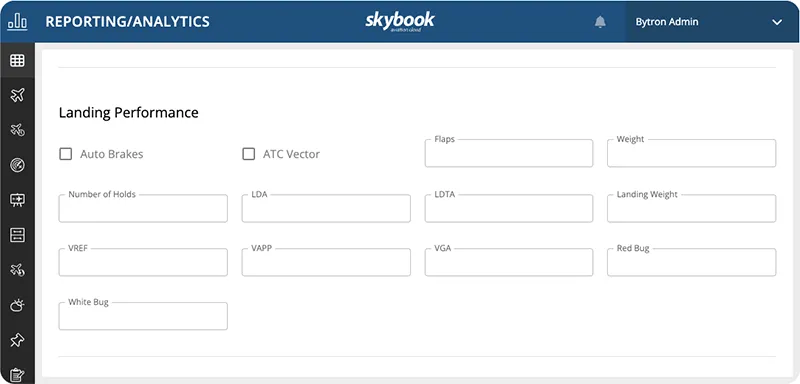
NOTAM overload and how to fix it
Landing an aircraft is one of the most critical phases of any flight. Pilots must consider multiple factors to ensure a safe touchdown, including aircraft weight, runway conditions, and approach speeds.
This is where landing performance comes in.
Pilots can easily log landing performance data on their Electronic Flight Bag (EFB) Journey Log, ensuring flight operations have the necessary insights for future decision-making and enhanced flight safety.
On the skybook EFB, the Landing Performance module is available within the in-flight section of the pilots journey log.
Here it contains all the relevant fields relating to landing performance, (which can be customised to aircraft & fleet requirements). With instant access to the data on the ground, by flight operations teams via the flight data record vault.

The aircraft’s weight at landing directly affects stopping distance. A heavier aircraft requires a longer runway to decelerate safely.
Landing weight accounts for fuel burn, passengers, cargo, and any weight adjustments made during the flight.
The skybook Weight & Balance calculator also accurately calculates the landing weight based on the load and fuel information.
LDTA is a crucial calculation that determines whether the aircraft can land safely on the available runway.
LDTA factors in aircraft weight, braking effectiveness, and environmental conditions such as wind speed and runway contamination.
VREF is the speed just before touchdown, based on the aircraft's weight and configuration.
This serves as the stabilised approach speed, ensuring the aircraft is well-positioned for landing.
VAPP is the target speed during the final approach, which is slightly higher than VREF to compensate for wind variations.
It is often indicated by the White Bug on cockpit displays, guiding pilots to maintain a steady approach.
If a go-around is required, pilots need to accelerate to VGA (Go-Around Speed) for a safe climb-out.
The Red Bug on cockpit instruments highlights this speed, ensuring a quick and decisive response if a landing needs to be aborted.
Flight dispatch and operations teams gain instant access to landing performance data using the Ground Portal.
This provides quicker data-driven decision-making such as:

Regulatory compliance is strengthened through streamlined record-keeping, ensuring that essential landing data, including landing distances and brake performance, is accurately recorded and readily accessible for audits.
With landing performance data readily accessible on the EFB device, flight crews can improve operational efficiency and safety, without having to sort through paperwork!
Pilots can also easily input approach CAT data on the EFB during the post-flight phase of the journey log; which is then transmitted to the ground and accessed by the relevant team members.
Landing performance is a critical aspect of flight safety, and EFB software applications can provide flight operations with the data needed to make further improvements.
Would you like to explore more features available on the skybook EFB journey log and pilot briefing?